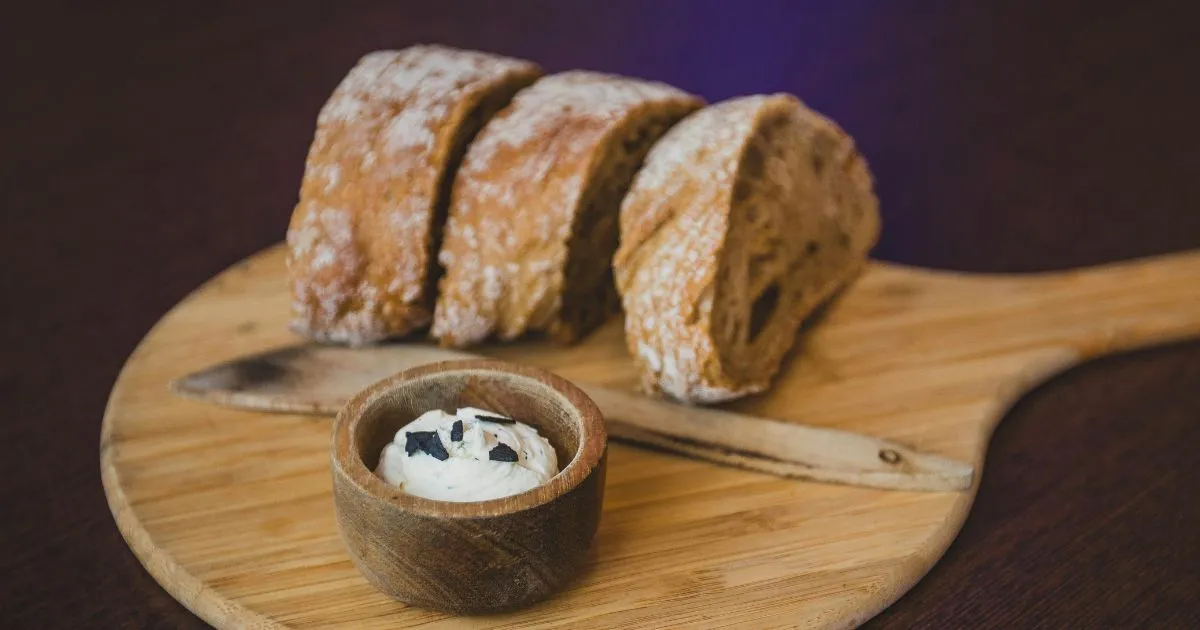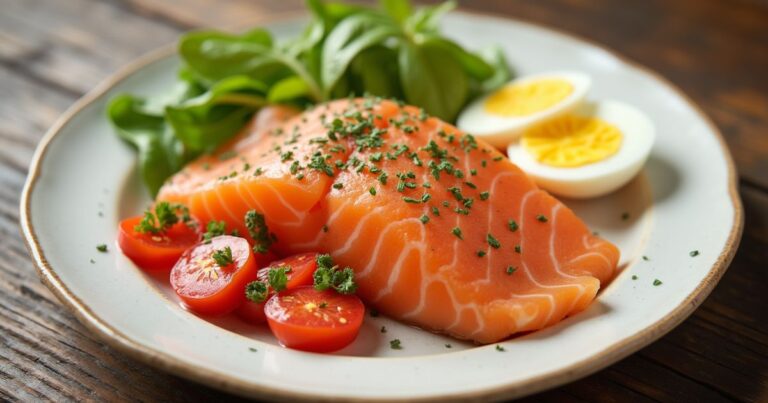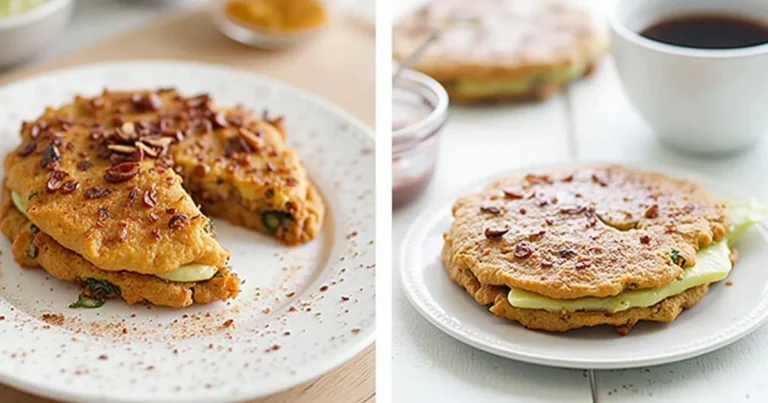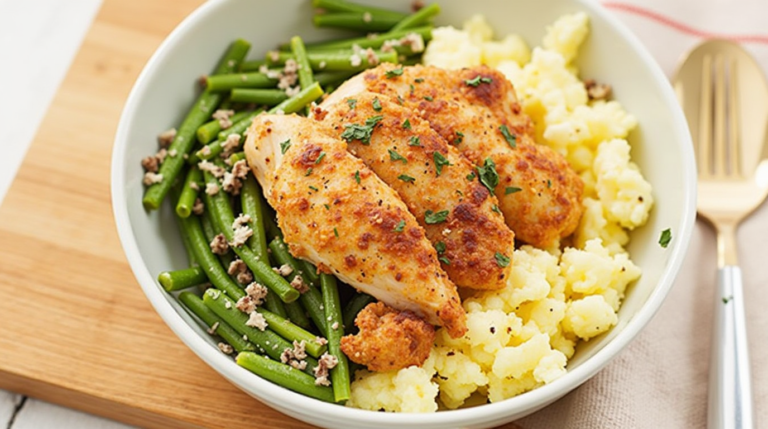Easy Sourdough Breakfast Recipes You Can Make at Home
Working with sourdough transforms plain flour and water into something magical every time. Especially when breakfast is just around the corner, the alchemy of fermentation opens opportunities much beyond the conventional loaf.
Table of Contents
The Sourdough Love Affair Early Morning
Imagine sunlight streaming through kitchen curtains, the unique scent of fermentation hanging in the air, and the expectation of that first heavenly bite. For many sourdough aficionados, that first taste sensation becomes ingrained in memory as the ideal balance of tang and weight that commercial products just cannot match.
Maybe you have been carefully feeding your sourdough starter, creating lovely handcrafted loaves, but you have not explored more than basic bread. Often needing just ingredients already on your pantry shelves, the breakfast table provides rich ground for sourdough experimentation.
These morning masterpieces solve the age-old question: what to do with all that waste and turn regular breakfast rituals into amazing gastronomic adventures.
Why Breakfast calls for sourdough?
Including sourdough in your daily regimen is not only trendy but also rather helpful. For many people, these breakfast foods may be simpler to digest than their industrially produced counterparts since phytic acid and gluten proteins are broken down by the natural fermenting process.
Before your day even starts, those helpful bacteria in sourdough provide a probiotic component to your breakfast, so possibly supporting gut health. With sourdough among the stars of this nutritional study, scientific research keeps investigating relationships between fermented foods and digestive wellness.
Apart from the possible health concerns, sourdough breakfast ideas are a great way to cut waste. Using extra sourdough in mouthwatering breakfast dishes instead of throwing it away will help you cut waste and enhance breakfast simultaneously.
Sourdough breakfast making helps even busy homes. Many recipes benefit from overnight fermentation, so you can make almost finished dishes needing little morning work by preparing ingredients before bedtime.
Key Sourdough Breakfast Tools & Ingredients
Instruments You Might Require
Perfect for pancakes, English muffins, and more, a well-seasoned cast iron skillet
- Different mixing bowls for several phases of cooking
- Kitchen scale for exact measuring
- Spatula resistant to heat and quality whisk
- Dough handling bench scrappers
- Sturdy baking sheet for several uses
Foundation for Starting
Realizing Your Starting Point
Making sourdough breakfast calls for a first thought on whether to use leftover or active starter. For recipes calling for lots of rising, such as morning bread or cinnamon rolls, this brilliantly effervescent, recently fed active starter is ideal. For pancakes, waffles, and recipes calling for baking soda or powder as the primary leavening agent, leftover starter—the component typically removed during feeding—works quite nicely.
Understanding peak starting readiness calls for observation; look for a doubling in volume, a dome-like surface, and obvious bubbles all around. Usually occurring 4-8 hours after feeding, timing depends on temperature and starting maturity.
Consistent starting health guarantees breakfast success. Your starter is kept balanced by consistent feeding schedules (removing half and adding equal weights of fresh flour and water). While refrigerated versions can often control weekly feeding schedules – ideal for occasional bakers – room temperature starters demand daily attention.
7 Simple Sourdough Pancakes and Waffles
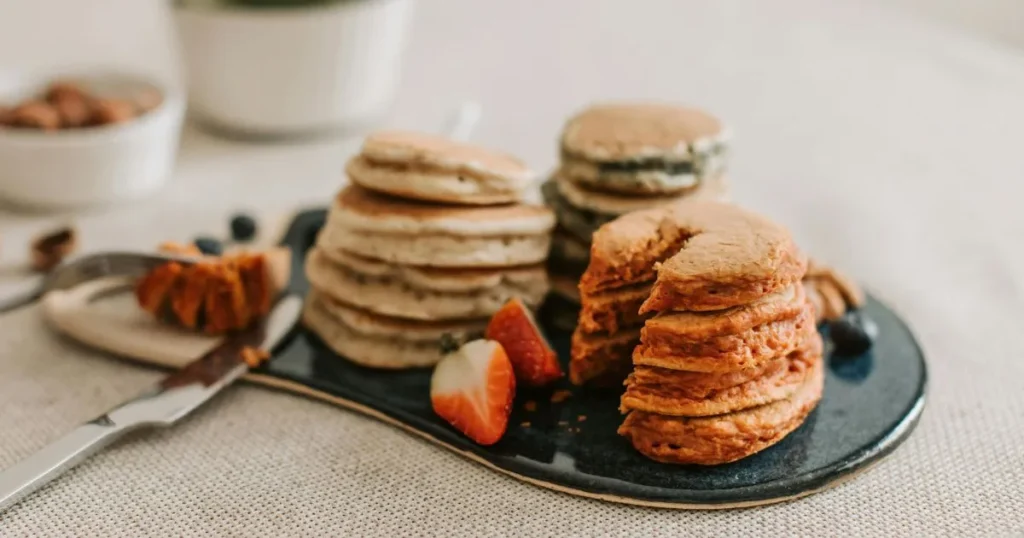
1. Typical Sourdough Pancakes
| Ingredients | Quantities |
| Sourdough throw-off | One cup |
| all-purpose flour | One cup |
| Milk | 3/4 cup |
| eggs | Two |
| Sugar | 2 Tbsp |
| baking powder | One teaspoon |
| Butter (melted) | 3 Tbsp |
| Vanilla extract | 1 tsp |
Making the perfect sourdough pancakes starts with combining the milk, flour, and discard night before. By separating the flour’s components and enhancing the depth of flavor, this overnight fermentation helps digestion. Fold in the remaining ingredients and gently stir to maintain the morning’s airy quality of the mixture.
Your cast iron skillet should be medium heated; when water droplets dance across the surface, you have found the perfect temperature. Pour quarter-cup portions; keep an eye on bubbles to flip to get both sides golden-brown perfection.
Top these pancakes with sliced bananas, chocolate chips, or blueberries for even more customization. For brunch presentations, top with yoghurt, fresh berries, maple syrup, or, for a change, lemon curd and whipped ricotta.
2. Waffles made from sourdough with a crispy exterior
Perfect waffles depend more on technique than they do on ingredients; a crisp outside gives way to a tender inside. Waffle success comes from more fat content and sugar caramelizing than from pancakes. For incredible lightness, separate the whipped egg whites.
Most of the ingredients should be ready the evening before; let the dough rise overnight. Reacting with the sourdough’s acidity, the morning added baking soda creates the most lift.
Make double batches and toast straight from frozen for impromptu weekday luxury; these waffles freeze beautifully. They will retain quality for several weeks in freezer storage between parchment layers.
3. Sourdough pancakes made from whole grains
Steering outside all-purpose flour brings amazing flavor dimensions. Replace half (or all) flour with earthy whole wheat, nutty spelt, and distinctive rye varieties. While producing unique flavor profiles, these substitutes bring mineral complexity and nutritional variety.
Usually requiring somewhat more liquid, whole grain variations gain from extra rest time. Their strong flavor complements fruit compotes, honey, or maple syrup rather nicely. Add banana or applesauce for natural sweetness that balances out more earthy flour choices.
Fourth Banana Pancakes Made from Sourdough
Sourdough pancakes save you when spotty bananas start to show on your counter. Overripe bananas are naturally sweet, which lowers added sugar needs and adds moisture and binding power.
To cut sugar, mash two medium bananas into your overnight fermenting mix. For banana fans of all ages, the resulting pancakes have caramelized exteriors while keeping custardy centers, quite irresistible.
For aromatic complexity, add cinnamon, nutmeg, or cardamom; for textural contrast, toss chopped walnuts. A dollop of peanut butter makes an amazing topping that melts over warm pancakes quite sensually.
Simple Sourdough Bread Variations & Toast
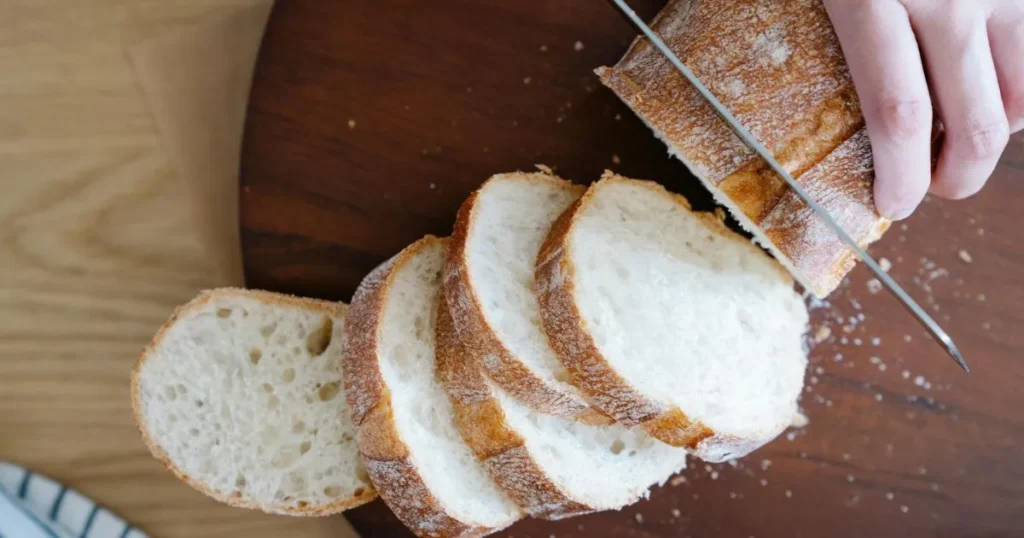
1. Sourdough Cinnamon Rolls Made Over Night
| Ingredients | Quantity |
| Active sourdough starter | 1/2 cup |
| Milk | 1/2 cup |
| All-purpose flour | Two one-half cups |
| Sugar | 1/4 cup |
| Salt | 3/4 tsp |
| Egg | 1 |
| Butter (softened) | 1/4 cup |
| For filling: | |
| Brown sugar | 3/4 cup |
| Cinnamon | Two tablespoons |
| Butter (softened) | 1/4 cup |
Though they demand preparation, these transcendent cinnamon rolls produce remarkable results. To get a soft, somewhat sticky dough, start with an active, effervescent starter combined with milk, flour, sugar, salt, and eggs. Add butter slowly after first mixing; let 4–6 hours for initial rise.
The magic starts with brown sugar-cinnamon stuffing laid over rolled dough, then cut into spirals. On a buttered tray, arrange them with a little gap between every piece. Here comes the genius: slow down fermentation while developing flavor by refrigerating overnight.
The last rise occurs in the morning at room temperature over one to two hours before baking to golden excellence. Top with a maple-butter drizzle, a basic powdered sugar frosting, or a cream cheese glaze for a really outstanding breakfast treat.
2. sourdough English muffins
Making those unique nooks and crannies calls for a particular method: cooking everything entirely on the stovetop in cast iron. Form a somewhat sticky dough by combining active starter with flour, milk, salt, and a bit of sugar. Brief kneading; let 6 to 8 hours ferment before shaping into discs.
The secret is to dust these liberally with cornmeal before cooking in a covered skillet over medium-low heat. This mild heat lets interiors create airy pockets before exteriors grow overly dark. To retain texture before toasting, split with a fork (never a knife!).
When split first, these freeze beautifully; pop straight into the toaster from frozen for foundations or vehicles for homemade jam.
3. French toast made with sourdough French bread
Day-old sourdough bread finds its best use turned into custardy French toast. While its strong structure keeps the bread from soaking, its natural acidity offers the ideal balance to the sweet custard mix.
To make the bread crispy on the outside and creamy on the inside, slice it thickly—at least two cm. Though variations abound – orange zest, bourbon, or cardamom create unique versions – the basic custard mixture combines eggs, milk, vanilla, and cinnamon.
Savory versions call for black pepper, sharp cheese, and herbs in the soaking mixture. Top with avocado, tomato jam, or smoked salmon to redefine brunch options.
Savory Sourdough Breakfast Alternatives
1. One Sandwich from sourdough breakfast
Thick-cut sourdough bread or homemade English muffins take breakfast sandwiches above fast-food standards. The sophisticated taste of the bread makes an ideal basis for fillings ranging from avocado-sprout vegan versions to classic egg-cheese-bacon combinations.
Ahead of assembly in minutes, prep components including roasted vegetables, baked egg squares, and caramelized onions. These sandwiches are great for weekend trips or morning commutes since they travel nicely.
For filling meat-free substitutes, vegetarian protein choices include tempeh bacon, chickpea patties, or just avocado with nutritional yeast.
2. Casserole Breakfast Made from Sourdough
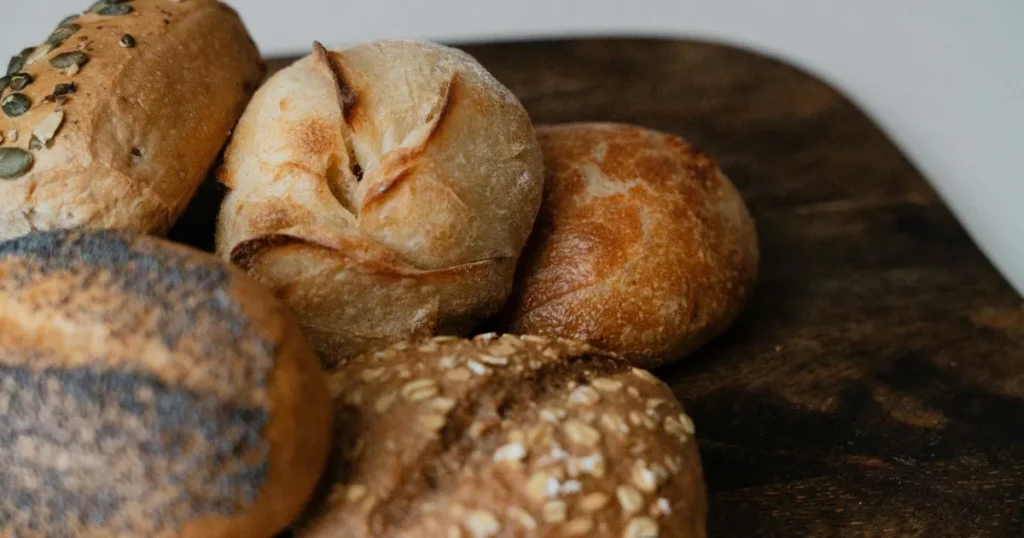
| Ingredients | Quantity |
| Day-old sourdough bread | 6 cups (cubed) |
| Eggs | 8 |
| Milk | 2 cups |
| Cheese (grated) | 2 cups |
| Breakfast sausage or bacon | 1 pound cooked |
| Onion (diced) | 1 medium |
| Bell peppers (diced) | 1 cup |
| Salt and pepper | To taste |
| Fresh herbs | two tablespoons |
This showstopper turns basic foods into a celebration-worthy breakfast. Brown breakfast meat separately; first sauté onions and peppers until tender. Combine these with bread cubes in a buttered baking dish; then, pour egg-milk mixture over everything, finishing with cheese and herbs.
Bread absorbs the vanilla cream, and the flavors mix perfectly when refrigerated overnight. Bake it in the morning, 350°F (175°C), until puffed and golden, 45 to 55 minutes.
Use mushrooms, spinach, roasted sweet potatoes, or plant-based sausage for vegetarian takes. Replace the conventional dairy components in dairy-free formulations with coconut milk and nutritional yeast.
3. Breakfast Pizza made from sourdough
Morning pizza? Obviously! From the remaining sourdough, make thin discs, let them rest at room temperature for a brief period, then bake at high heat until only partially set. Top with eggs, cheese, vegetables, and meats; then, turn the oven back on until the eggs are done.
Pre-bake crusts completely for faster versions, then freeze. Breakfast in minutes just calls for topping these par-baked foundations and quick reheating, morning assembly!
Inspired recipes call for classic bacon-cheddar-scallion, potato-rosemary-gruyere, or spinach-feta-egg. Finish these morning masterpieces with a brush of olive oil and a sprinkling of flaky salt.
Simple 15-minute Sourdough Breakfast Recipes
Sourdough is still a great choice even in a short time. Before being rolled out thinly and briefly baked, these disposable biscuits just need mixing with flour, oil, salt, and seasoning. One can create breakfast spreads, avocado or cream cheese, using them.
Sourdough discard biscuits come together in minutes; pulse flour, cold butter, salt, and baking powder in a food processor, then fold in the discard. For rustic shape, drop spoonfuls onto a baking sheet; alternatively, quickly pat and cut traditional rounds.
Prepare overnight muesli using leftover oats, milk, and dried fruits for really low morning effort. By morning, fermentation will have turned these foods into a spoonable breakfast needing just fresh fruit toppings.
Seasonal Variations for Recipe Sourdough Breakfast
Breakfast becomes very special when matched with seasonal abundance. Spring calls strawberry-rhubarb compote over sourdough pancakes; summer calls blueberry-studded waffles or peach-topped French toast.
Apple-cinnamon variations have caramelized fruit topping; autumn brings pumpkin puree and warming spices into pancake batter. With orange zest, winter citrus brightens overnight fermentation; cranberry-walnut combinations provide festive holiday ideas.
Think about using local honey varieties all year long, clover in spring, and wildflower in summer as unique toppings that link breakfast to your particular location.
Troubleshooting Your Breakfast Recipe Sourdough
Pancakes spreading too much? Your batter might be too thin; until correct consistency returns, add more flour, tablespoon by tablespoon. On the other hand, thick, cake-like pancakes need more liquid to spread properly.
Different starting strengths yield different results; a younger starter adds a milder taste while sour discard produces tangier breakfasts. Change the sugar depending on your taste and starting point.
For correct texture, high-altitude bakers might need extra flour and somewhat higher leavening. Cut sugar slightly and boost liquid to get the best results above 3,500 feet.
Starting Your Sourdough Breakfast Trip
Your sourdough starter, that bubbling jar of possibilities, is just waiting to turn everyday mornings into remarkable gastronomic adventures. These breakfast ideas use every phase of your starting life, from vivid peak to excess discard, outside of conventional bread.
Start with easier dishes, such as pancakes or waffles, then work up to overnight cinnamon rolls or English muffins. Every creation increases confidence and helps one to grasp the special qualities of sourdough.
Beginning to personalize these bases with seasonal foods and tastes reveals the true magic. Your signature sourdough breakfast dishes are just waiting for exploration; only imagination and appetite will limit them.
Why not start this next Saturday? Choose one recipe, compile ingredients, and then start your sourdough breakfast journey. Share your works with other aficionados, trade ideas, and honor the change of simple flour and water into morning glory.
Using your sourdough starter tomorrow morning, what will you first produce?
Frequently Asked Questions Regarding Sourdough Breakfast Recipes
Q: Can I make use of a week-old sourdough leftovers from my refrigerator?
A: Surely! In most breakfast dishes, especially pancakes and waffles, refrigerated sourdough discard looks great. Older discard usually develops more noticeable tanginess, which is a feature many bakers actively search for. Although extremely old discard (showing pink or orange discoloration) should be thrown away, week-old refrigerated starter remains perfect for non-rising breakfast uses.
Q: Without a starter yet, how can I create sourdough breakfast ideas?
A: You have to build a starter before looking at sourdough breakfast ideas. Start by mixing equal weights of flour and water in a jar; discard half and feed daily fresh flour or water. Your wild yeast colony should show steady activity in five to ten days. Alternatively, grab some straight away from a friend’s established starting point. Many bakeries also share or sell mature starter to speed your sourdough adventure.
Q: Are regular breakfast recipes less healthy than sourdough breakfast recipes?
A: Sourdough breakfast recipes’ fermenting process offers possible digestive benefits over more traditional forms. While partly breaking down gluten proteins, the long bacterial action breaks down phytic acid, which can prevent mineral absorption. Many people say sourdough products digest more easily than commercial substitutes. Furthermore, produced by fermentation are special molecules, including organic acids that add taste and possibly prebiotic advantages.
Q: How might I make kid-friendly sourdough breakfast dishes?
A: Children initially approach the sour taste of sourdough with great caution. Consider vanilla and cinnamon additions for kid-friendly sourdough breakfast dishes since they naturally accentuate the taste character of sourdough. Pancakes and waffles taste better with chocolate chips, fresh berries, or banana slices added in. With its pudding-like texture and sweet toppings, sourdough French toast usually appeals to younger diners. For interactive breakfast entertainment, think about serving dipping sauces next.
Q: Are gluten-free sourdough breakfast ideas possible?
Making sourdough breakfast recipes calls for first building a gluten-free starter. Starting with rice flour, buckwheat, or a commercial gluten-free mix blended with water, follow normal starting guidelines. Once established—usually 7–14 days—this starter replaces most recipes with suitable gluten-free flour blends straightforwardly. Extra binding agents such as xanthan gum or psyllium husk often help these formulations. Expect rather different fermentation times and moisture requirements as gluten-free flours absorb moisture differently.

